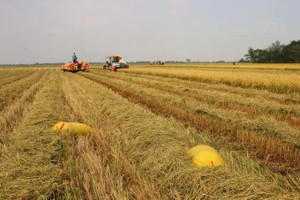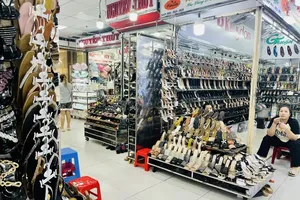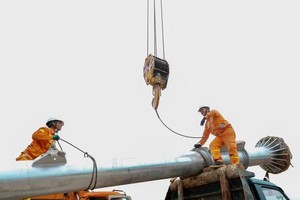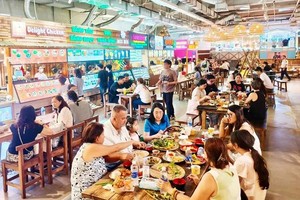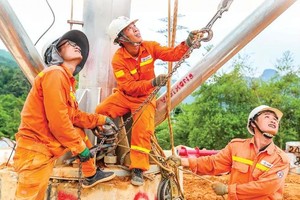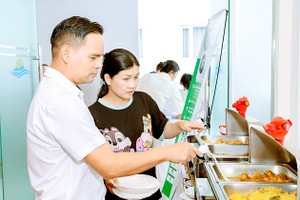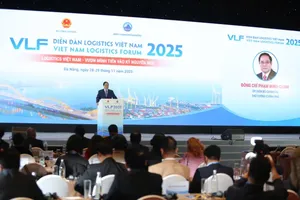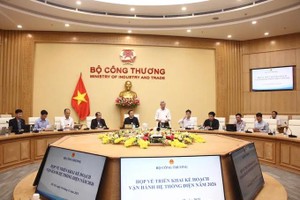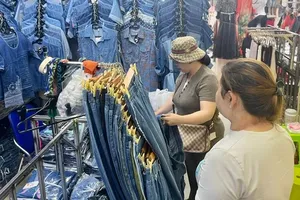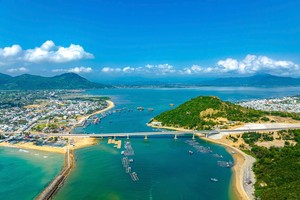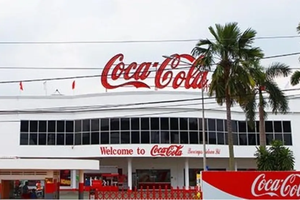
This area used to be a white sand and arid land with four “Nos” – No infrastructure, No labour force, No investor, and No market – 15 years ago; but now it has grown into a major economic zone hosting over 100 industrial projects, the Government leader told a ceremony to announce the expansion of the Chu Lai Open Economic Zone in Quang Nam on December 16.
The PM attributed the major part of the economic zone’s success to the Truong Hai Auto Corporation (Thaco), who pioneered to invest in the zone.
Thaco was the first Vietnamese firm to develop a mechanical automobile industrial complex in the zone, he said, adding that it was a right approach to develop the support industry for Vietnam’s automobile manufacturing. The company now has more than 30 state-of-the-art facilities and is a great example for effective cooperation between domestic and foreign enterprises, he noted.
Phuc further said that with the expansion of the Chu Lai Open Economic Zone, the government aims to turn it into a national hub for support industries for automobile, petro-chemistry, textiles-garment, and hi-tech.
He asked ministries and state agencies to take drastic and comprehensive steps to support investors, encourage innovation and improve national competitiveness in the economic zone.
At the event, the Ministry of Construction announced the PM decision approving the newly-adjusted planning of the Chu Lai Open Economic Zone towards 2035, with a vision to 2050. Accordingly, the economic zone will be expanded to more than 27,000 hectares. It will have three duty-free zones, covering a total area of over 1,000 hectares, including a 225-hectare zone located at Chu Lai Airport.
It is expected to house 250,000 people by 2025 and 550,000 by 2035.
The Chu Lai Open Economic Zone attracted 23 projects in 2017, of which three were foreign investment projects worth US$16 million.
Total investment of US$1.4 billion was made during the year, 13.5 times as much as the year before.
Since 2003, the zone has lured 138 projects with a total registered investment capital of US$3.68 billion. Among those were 34 FDI projects worth US$1 billion.
The PM attributed the major part of the economic zone’s success to the Truong Hai Auto Corporation (Thaco), who pioneered to invest in the zone.
Thaco was the first Vietnamese firm to develop a mechanical automobile industrial complex in the zone, he said, adding that it was a right approach to develop the support industry for Vietnam’s automobile manufacturing. The company now has more than 30 state-of-the-art facilities and is a great example for effective cooperation between domestic and foreign enterprises, he noted.
Phuc further said that with the expansion of the Chu Lai Open Economic Zone, the government aims to turn it into a national hub for support industries for automobile, petro-chemistry, textiles-garment, and hi-tech.
He asked ministries and state agencies to take drastic and comprehensive steps to support investors, encourage innovation and improve national competitiveness in the economic zone.
At the event, the Ministry of Construction announced the PM decision approving the newly-adjusted planning of the Chu Lai Open Economic Zone towards 2035, with a vision to 2050. Accordingly, the economic zone will be expanded to more than 27,000 hectares. It will have three duty-free zones, covering a total area of over 1,000 hectares, including a 225-hectare zone located at Chu Lai Airport.
It is expected to house 250,000 people by 2025 and 550,000 by 2035.
The Chu Lai Open Economic Zone attracted 23 projects in 2017, of which three were foreign investment projects worth US$16 million.
Total investment of US$1.4 billion was made during the year, 13.5 times as much as the year before.
Since 2003, the zone has lured 138 projects with a total registered investment capital of US$3.68 billion. Among those were 34 FDI projects worth US$1 billion.
